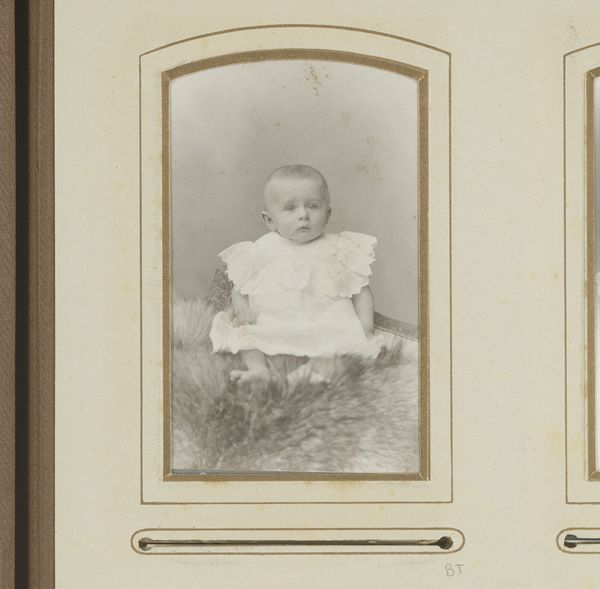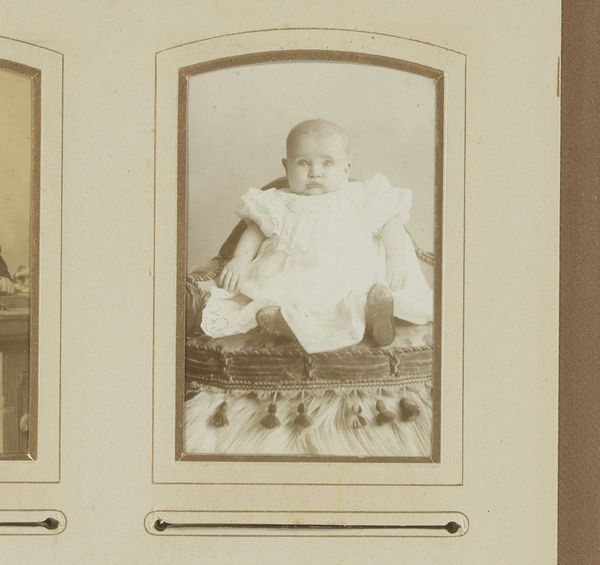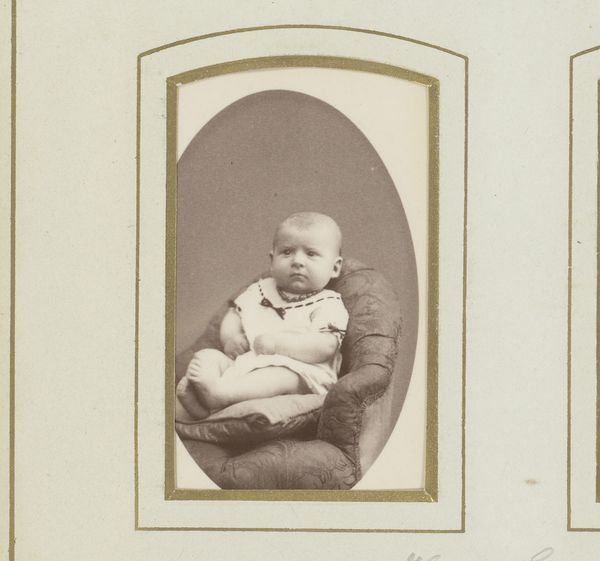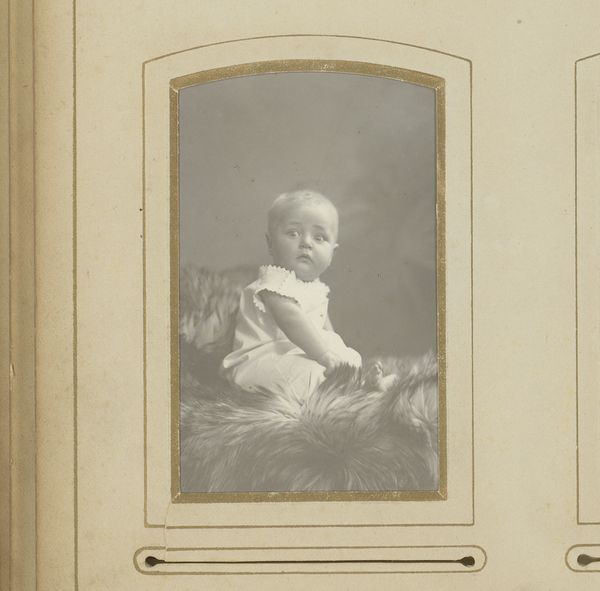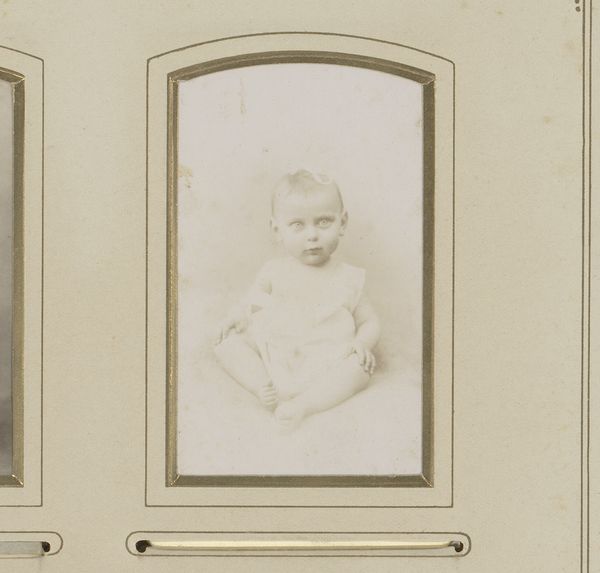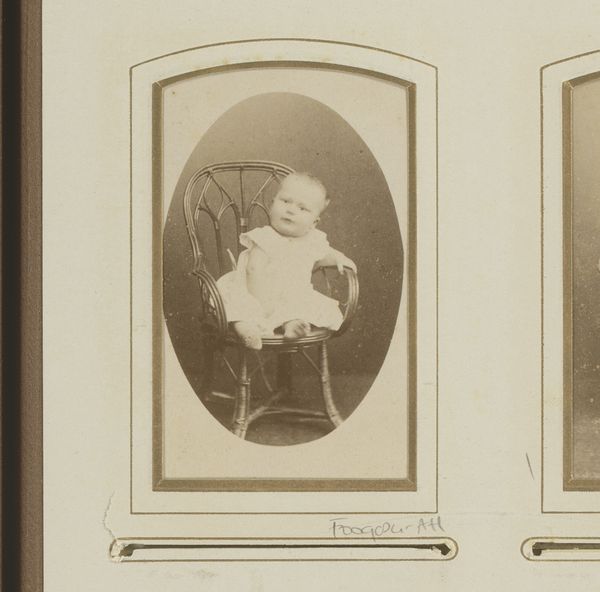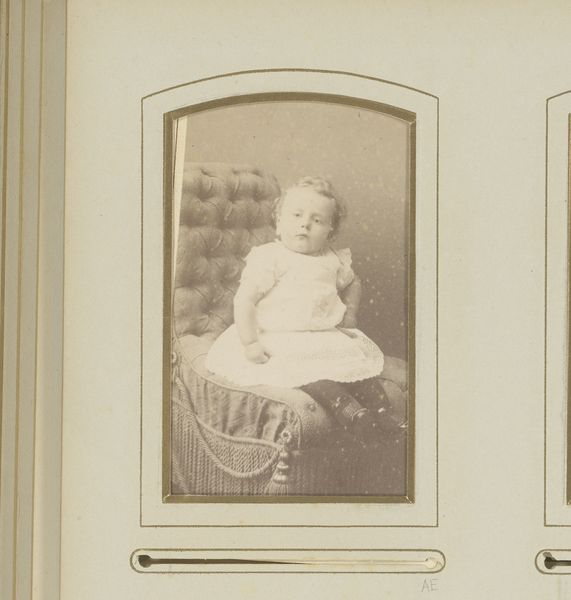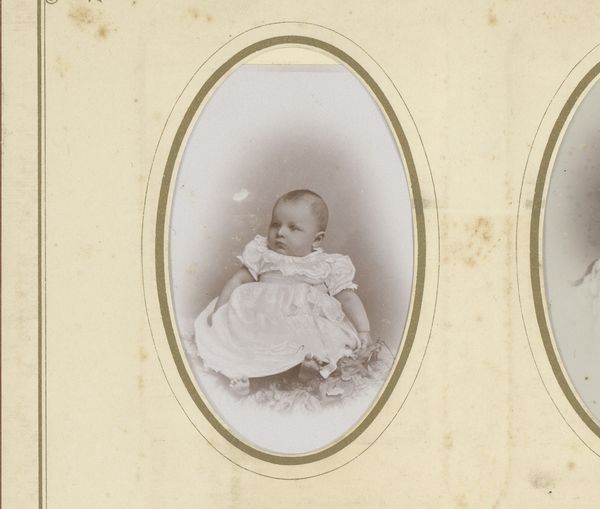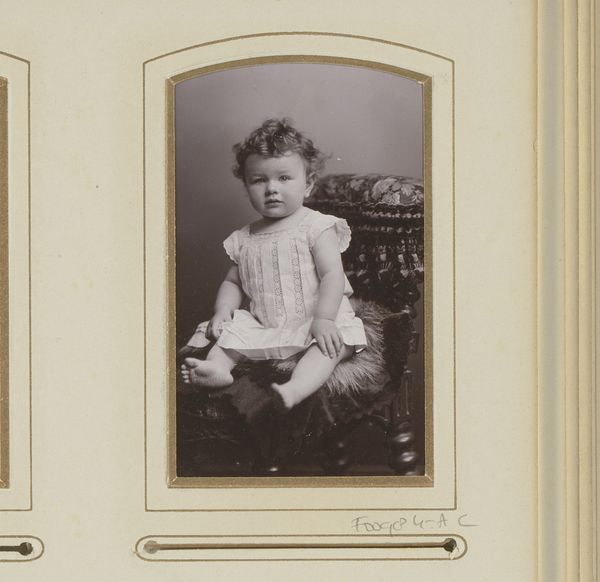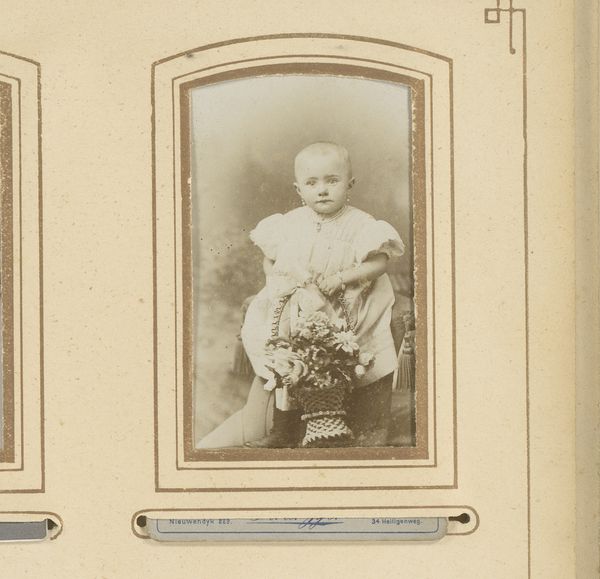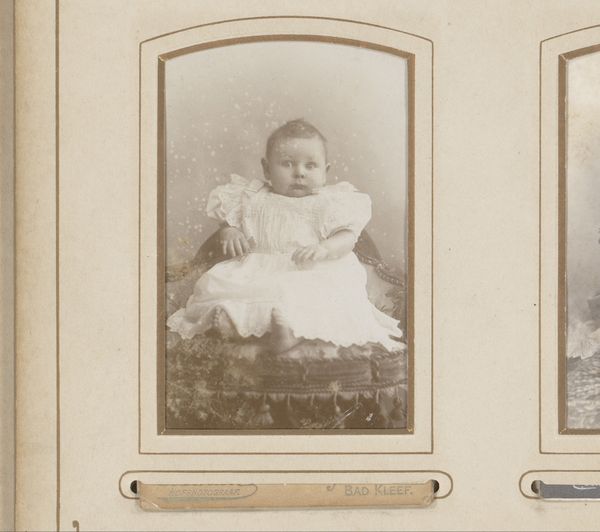
photography, gelatin-silver-print
#
portrait
#
still-life-photography
#
pictorialism
#
photography
#
historical photography
#
gelatin-silver-print
Dimensions: height 85 mm, width 51 mm
Copyright: Rijks Museum: Open Domain
Editor: This is "Portret van een baby," a gelatin-silver print by Adolf Neumann, sometime between 1880 and 1940. The soft focus really struck me, almost like a dream. What can you tell me about this photographic process and its context? Curator: Considering Neumann’s portrait of a baby through a materialist lens asks us to examine the labour and social implications embedded in the gelatin-silver print process itself. The albumen print was dominant before this; what shift in production, distribution and class values does this new medium reveal? Editor: So, the move from albumen to gelatin-silver signifies a bigger societal shift in photo production and use? Curator: Precisely. Think about the increased sensitivity of gelatin-silver. What did this allow in terms of capturing everyday life versus highly posed portraits? The availability of materials and processes democratized photography; How do increased reproducibility and potential affordability influence who is represented in photographs and what kind of photographs are made? Editor: I never considered how a new technique could actually change who even gets *seen* in photographs! Does the way this was printed also affect our interpretation? Curator: Absolutely. Pictorialism, a style visible here, favored soft focus, artistic darkroom manipulations. How did these artistic choices reinforce or challenge ideas about photographic truth versus artifice at that time? What statements are made when photographic portraits of everyday people and personal items start imitating painting styles? Editor: It's interesting to consider that something like soft focus isn't just a style, but also a way of controlling how a medium is used, by selecting materials and focusing on different subject matters. It makes me think differently about even simple photos. Curator: Exactly. Examining materiality pushes us to think about who gets to make art, who gets represented, and what ideologies are being perpetuated by how an artwork is created and viewed.
Comments
No comments
Be the first to comment and join the conversation on the ultimate creative platform.
